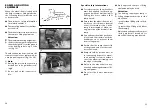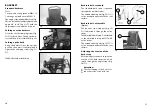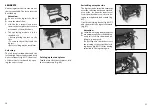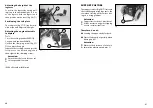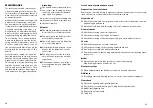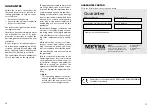
47
46
STEP CLIMBER
The step climber (fig. 67) serves exclu-
sively for the crossing of obstacles.
!
Attention:
It must only be used for driving
over firm, non-moving obstacles on
firm and level surfaces.
•
The maximum obstacle height for
the step climber is 11 cm.
Crossing an obstacle
Drive onto the obstacle at a right an-
gle and with a reduced speed suitable
for the obstacle height.
The step climber will make contact
with the obstacle first and the impe-
tus will lift both swivel wheels over
the step.
67
!
Attention:
An increased danger of tipping
over exists in the following situa-
tions when crossing an obstacle
with the step climber!
•
A seat inclination adjustment.
•
Driving with angle-adjusted back-
rest.
•
Driving on a rising/falling gradi-
ent, especially without a lap belt.
•
Oblique crossing of an obstacle.
•
Additional luggage behind the
backrest or hung one-sided on an
armrest.
•
Driving with too low tyre pressure.
•
Operation on uneven and/or loose
surfaces.
1
66
1
STUMP SUPPORT
Removal
Pull up the locking device (fig. 65/
➀
).
Swivel out the stump support and then
pull it off in an upward direction.
Fitting of
With the stump support in the swiv-
elled-aside position, hang it in and
then swivel it to the front until the
locking device audibly latches. – Check
for a correct locking of the locking
device!
Adjusting the height of the
stump support
You raise the stump support by sim-
ply pulling it up to the desired height.
To lower the stump support, hold the
legrest and then press down the lever
(fig. 66/
➀
).
Positioning the calf plate
The calf plate (fig. 66/
➁
) can be swiv-
elled to the side.
65
2




